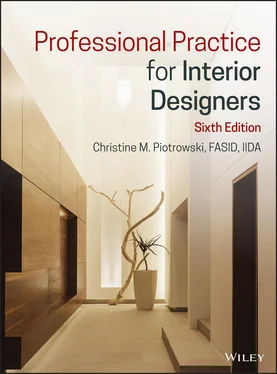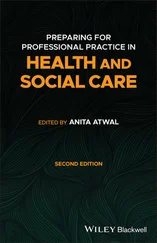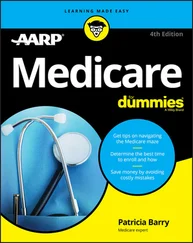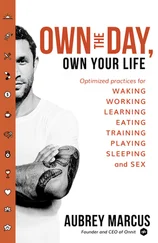Christine M. Piotrowski - Professional Practice for Interior Designers
Здесь есть возможность читать онлайн «Christine M. Piotrowski - Professional Practice for Interior Designers» — ознакомительный отрывок электронной книги совершенно бесплатно, а после прочтения отрывка купить полную версию. В некоторых случаях можно слушать аудио, скачать через торрент в формате fb2 и присутствует краткое содержание. Жанр: unrecognised, на английском языке. Описание произведения, (предисловие) а так же отзывы посетителей доступны на портале библиотеки ЛибКат.
- Название:Professional Practice for Interior Designers
- Автор:
- Жанр:
- Год:неизвестен
- ISBN:нет данных
- Рейтинг книги:4 / 5. Голосов: 1
-
Избранное:Добавить в избранное
- Отзывы:
-
Ваша оценка:
- 80
- 1
- 2
- 3
- 4
- 5
Professional Practice for Interior Designers: краткое содержание, описание и аннотация
Предлагаем к чтению аннотацию, описание, краткое содержание или предисловие (зависит от того, что написал сам автор книги «Professional Practice for Interior Designers»). Если вы не нашли необходимую информацию о книге — напишите в комментариях, мы постараемся отыскать её.
Professional Practice for Interior Designers
Professional Practice for Interior Designers — читать онлайн ознакомительный отрывок
Ниже представлен текст книги, разбитый по страницам. Система сохранения места последней прочитанной страницы, позволяет с удобством читать онлайн бесплатно книгу «Professional Practice for Interior Designers», без необходимости каждый раз заново искать на чём Вы остановились. Поставьте закладку, и сможете в любой момент перейти на страницу, на которой закончили чтение.
Интервал:
Закладка:
Maureen Mitton's book, Portfolios for Interior Designers , is an excellent resource for preparing a digital portfolio. There are others that can be found via an Internet search and review of the general references at the end of the text.
Non‐Digital Portfolio Tips
Even though you will likely have the portfolio on a digital format, it is beneficial to comment on a few tips related to a non‐digital version of a portfolio. In part this is needed as a backup in case anything goes wrong with your DVD or USB. Some of these suggestions will be the same or similar to what was discussed above.
Begin with a high‐quality piece or a project that showcases a whole project.
Provide brief written descriptions of each item.
Present all the examples consistently in either a vertical or a horizontal manner.
Include a sample of hand lettering. This lost art is still important to some employers.
Do not include poor‐quality work. Only include your best items.
Include one or two clean copies of your resume and references in a plastic sleeve.
It should end with another quality piece to serve as a “last impression” of what you can do.
Store projects, drawings, models, and so on, carefully so that they do not become damaged.
HOW EMPLOYERS REVIEW RESUMES AND COVER LETTERS
Between posted and mailed resumes, business owners receive dozens if not hundreds of resumes and letters every week. Today, most resumes arrive via e‐mail or other online postings. Most often these come to the office without any job posting or announcement of any kind. Since those in charge of hiring are very busy, it is going to take some luck to get them to notice your inquiry. Today the reality is that with so many people applying via the Internet, it gets even harder to be noticed by the right people.
What is likely to catch their attention is something that is said in your e‐mail message or cover letter. In fact, unless the employer is actually looking for someone, they may not even read beyond that opening sentence or two. Here is once again where key words come into to play. A scanned page or the scanning software the company might be using will eliminate any correspondence that does not hit on some of the key words important to a particular firm or certainly an interior design firm.
Besides key words, what will get you noticed? Brief statements about skills, education, certifications, and relevant experience related to the job opening. Claims of accomplishment than seem unreasonable for the individual's apparent level of experience will be suspect. Of course, poor spelling, sloppy appearance, a “To Whom It May Concern” salutation, too many pages, or an obvious lack of skills top a long list of negatives.
One way to get positively noticed is commenting on how you heard about the company or job opening. Remember that a lot of jobs open up because of personal connections. If someone recommends that you contact an employer, let the hiring employer know whom it is you know that gave the recommendation. This is one situation where “who you know” can be a very positive advantage in job hunting.
Employers are impressed when an applicant has done some research about the firm. For example, craft objective, summary statements, and skills statements related to the work done by the firm and the job that you seek at the firm.
While employers most want to know how you can help this company, they also will want to get some idea of what you did for others. Be brief in your cover as your resume will fill in details. Be sure you are clear in your documentation about your employment history and skills. They will especially be impressed by comments that quantify your experience, as these will stand out.
You do not need to be one‐dimensional focused only on the profession to get a job today. Indicate involvement in community groups, other outside activities, travel out of the country, and language skills. This can be especially eye‐catching to firms doing international design work. Yet do not short change your successes in project management, profit making, or anything else indicating that you know how to achieve goals.
Finally, employers are also interested in skills in communication and ability to interact with clients. Designers do not just communicate through their drawings. Writing and verbal skills are at least equal in importance to technical skills for some positions, and may be more important for others. Be sure your social media presence is professional as well. Once again, always be truthful in what you include in job‐hunting documents, as untruths will be found out.
THE JOB INTERVIEW
A job interview is a stressful situation regardless of whether you are a student or an experienced professional. All your preparation and hard work have gotten you to this point. You are ready to present yourself and your skills through a personal interview. For some this is a terrifying idea just like standing up to make a speech. Only this “speech” is to one person. This is your chance to make a good impression, to convince the employer that you are the one person in the world who can handle the job.
The planning and preparation for your interview are no less important than any other kind of planning and preparation discussed in this text. The interview is where little things more often than not torpedo a candidate. That is why preparation is so important. The hints and comments in this section, we hope, will help you to achieve success as you move through the interview process.
Let's start with something very basic. Lateness and no‐shows are nearly inexcusable. If for any reason you cannot keep the interview appointment, call and personally talk to the interviewer to tell him or her. Do not be late unless it is due to something totally beyond your control—but if you must be late, be sure you call. To avoid being late, make a point of arriving at the office or studio at least 10–15 minutes early. This will help you relax before you go in to the interview.
A second very important basic part of interviewing is to verify details. Twenty‐four to forty‐eight hours before the interview, call to double‐check on details such as time, the person who will be interviewing you, and how to pronounce his or her name. If you are traveling to another city, find out where to park or how to get to the office.
There are several tasks that you should perform in preparation for your interview.
If you can, clarify if more than one person will be interviewing you. If so, request an agenda, so that you will know how much time you will be spending with each person.
Know the time frame. Initial interviews can be as short as 30 minutes or can last 2 hours, though an hour is the average. In either case, plan to spend about 20 minutes showing your portfolio and the rest of the time answering questions.
Bring a few extra paper copies of your resume just in case they are needed. Also have a pen should you have to fill out any application documents.
Be sure your portfolio is organized and that the digital presentation works flawlessly. Do not count on the employer to have the hardware you need to show your portfolio. Familiarize yourself with what you are going to show the interviewer.
Ensure neat appearance and good grooming. Check the outfit you wish to wear to be sure it is clean and pressed and shoes are shined. As necessary, trim your hair and take care of other personal grooming needs.
Prepare yourself. Your mental preparation includes anticipating and thinking about the kinds of questions the interviewer may ask you and that you may want to ask the interviewer about the company. Some common questions are included at the end of this section.
Читать дальшеИнтервал:
Закладка:
Похожие книги на «Professional Practice for Interior Designers»
Представляем Вашему вниманию похожие книги на «Professional Practice for Interior Designers» списком для выбора. Мы отобрали схожую по названию и смыслу литературу в надежде предоставить читателям больше вариантов отыскать новые, интересные, ещё непрочитанные произведения.
Обсуждение, отзывы о книге «Professional Practice for Interior Designers» и просто собственные мнения читателей. Оставьте ваши комментарии, напишите, что Вы думаете о произведении, его смысле или главных героях. Укажите что конкретно понравилось, а что нет, и почему Вы так считаете.












